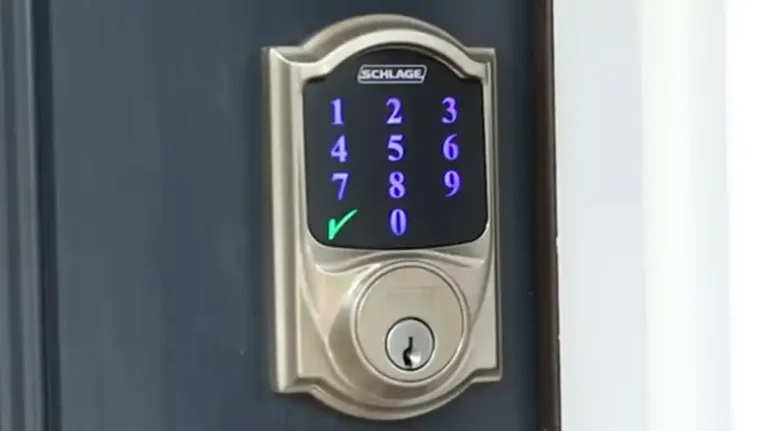Occupancy Sensor Vs Motion Sensor: Key Differences and Applications
To control costs and facilitate growth, optimizing office space utilization is vital. Sensor technology, specifically occupancy sensors, offers valuable insights into space usage. By monitoring actual office space utilization, companies can make informed decisions about adjusting their facilities to meet their needs. This leads to cost savings by freeing up underutilized space and boosts productivity through improved workspace design.
Simply put, occupancy sensors are used to detect how many people are present in a space. motion sensors on the other hand, detect movement in any given area.
To make the right choice in optimizing real estate, it’s essential to compare occupancy sensors and motion sensors. This article explains the capabilities of both sensor types to assist you as an individual or company in selecting the best technology for occupancy monitoring and space planning.

What Is an Occupancy Sensor?
An occupancy sensor is a smart device designed to detect both motion and the presence of people in a given space. It employs various technologies, such as infrared, ultrasonic, or sound-based methods, to determine whether a room is actively occupied. Occupancy sensors are known for their ability to distinguish between human presence and other moving objects, reducing the likelihood of false triggers.
What Is a Motion Sensor?
A motion sensor, on the other hand, is primarily focused on detecting any motion or movement in its field of view. It commonly uses passive infrared (PIR) or ultrasonic technology to sense changes in the surrounding environment. While motion sensors are often used for security purposes, they may not differentiate between people and inanimate objects, which can lead to false alarms in some cases.
Difference Between Motion and Occupancy Sensor
Let’s break down the distinctions between occupancy sensors and motion sensors:
| Aspect | Occupancy Sensor | Motion Sensor |
| Detects both motion | Yes | Yes |
| and human presence | Yes | No (primarily detects motion) |
| False alarm potential | Lower (better at distinguishing between people) | Higher (may trigger alarms for non-human movement) |
| Energy-saving feature | Yes | No |
| Ideal for | Energy-efficient lighting and HVAC control, building automation | Security systems, outdoor lighting |
The table above provides a concise overview of the key differences between occupancy sensors and motion sensors. Let’s get deeper into these differences:
Detects both motion and human presence: Occupancy sensors are equipped to identify both movement and the presence of people, making them highly suitable for applications where you need to know if a space is actively being used.
False alarm potential: Occupancy sensors tend to have a lower false alarm potential compared to motion sensors. Their ability to distinguish between human presence and other moving objects reduces the likelihood of unintended triggers.
Energy-saving feature: Occupancy sensors are designed with energy conservation in mind. They are commonly used to automatically turn off lights and HVAC systems in unoccupied spaces, significantly reducing energy waste.
Ideal for: Occupancy sensors find their best use in energy-efficient lighting and HVAC control, as well as building automation systems, where knowing when a room is in use is crucial. In contrast, motion sensors are often preferred for security systems and outdoor lighting but may not be as suitable for environments where precise occupancy detection is needed.
Applications: Integrating Occupancy and Motion Sensors with Door Lock Systems
Occupancy Sensors with Door Locks
Occupancy sensors can also play a useful role in access control and security by integrating with electronic door locks and access systems. For example:
- Occupancy sensors could automatically lock doors to unused conference rooms or offices if no occupants are detected for a set time period. This improves security.
- In multifamily residential buildings, occupancy sensor data could restrict access to certain amenity spaces like fitness rooms once desired occupancy limits are reached.
- Occupancy sensors near entryways could disengage magnetic door locks when someone approaches to allow access and improve convenience.
- Historic occupancy patterns gathered by sensors could inform scheduled access restrictions to spaces based on utilization data.
- With smart locks and home automation, occupancy sensors inside homes could trigger doors to lock automatically when residents leave, adding security.
Motion Sensors with Door Locks
While occupancy sensors infer human presence, motion sensors detect activity and movement within spaces. When integrated with door locks and access systems, motion sensors can also afford key benefits:
- Motion sensors positioned near entryways could trigger door locks to engage if movement occurs during specified nights and weekends to deter intruders.
- Motion detectors on either side of an automated sliding door could ensure the doorway is clear of activity before allowing the doors to close and lock.
- Part of a comprehensive intruder alarm system, motion sensors detecting activity could prompt all doors in a facility to automatically lockdown.
- Motion sensors could disengage magnetic door locks when movement is detected near a doorway, allowing badge- and keypad-free access.
Which One Should You Use?
Choosing between occupancy sensors and motion sensors depends on the specific requirements of your application:
- Occupancy Sensors:
- Ideal for offices, meeting rooms, and conference spaces to optimize energy use.
- Suited for retail stores to control lighting in aisles or fitting rooms.
- Used in homes for hands-free lighting control in rooms and hallways.
- Motion Sensors:
- Commonly used in security systems to detect unauthorized movement.
- Perfect for outdoor lighting to illuminate driveways, pathways, and entryways.
- Frequently employed in industrial settings for safety and automation purposes.
Verdict
In summary, the choice between occupancy sensors and motion sensors hinges on your specific needs. If you require precise control over energy consumption and want to reduce false alarms, occupancy sensors are the way to go. On the other hand, if security or basic motion detection is your primary concern, motion sensors are the better choice.
Can occupancy sensors be used outdoors?
Yes, occupancy sensors can be used outdoors but are typically more suitable for indoor applications. Motion sensors are often preferred for outdoor lighting.
Are there hybrid sensors that combine both features?
Yes, some sensors combine occupancy and motion detection features for added flexibility. These hybrid sensors can be useful in applications where both functions are required.
Are there wireless options for both types of sensors?
Yes, both occupancy and motion sensors are available in wired and wireless versions, allowing for greater installation flexibility.






![[ANSWERED] Can Someone Disable an Arlo Camera?](https://safetysuggest.com/wp-content/uploads/2023/06/Can-Someone-Disable-an-Arlo-Camera-768x431.webp)